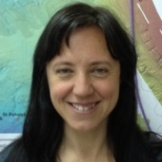Marine Sediments and Marine Environments
A special issue of Geosciences (ISSN 2076-3263). This special issue belongs to the section "Sedimentology, Stratigraphy and Palaeontology".
Deadline for manuscript submissions: closed (1 May 2019) | Viewed by 18918
Special Issue Editors
Interests: marine depositional systems; grain-size analysis and techniques; habitat mapping; sedimentological and geochemical proxies; rare-earth elements as environmental proxies; heavy metal pollution recorded in sediments
Interests: sedimentary record in continental shelf, continental slope and basins; physical properties of marine sediments and submarine landslides; architecture of continental margins and sedimentary systems
Special Issue Information
Dear Colleagues,
The knowledge of sediment composition and processes of the different marine environments is the base for any marine geological study. The marine sedimentary record is highly dependent on the environmental conditions of the depositional area due to both the inputs and the sedimentary processes. Recent developments and availability in analytical procedures have promoted detailed studies on sediment properties applied to better characterize marine environments and their peculiarities.
This Special Issue is a good opportunity to publish recent challenges achieve in the studies of marine sediments and marine environments that let increasing the knowledge applied to interpretation and modelling of the marine processes and products. Therefore, the aim of this Special Issue of Geosciences is to cover the following subjects:
- Sediments and sedimentary processes in the continental margin.
- Late Pleistocene-Holocene marine records of different marine environments.
- Factors controlling marine sediments deposition and depositional environments.
- Facies analysis in recent marine environments.
- Mapping of marine sedimentary environments and related processes.
- Physical properties to characterize marine environments.
- Geochemistry of the sedimentary record as key features for interpreting marine environments.
- Numerical modelling in sedimentology applied to marine sedimentary environments.
- Sedimentary record of singular marine environments as mud volcanoes, pockmarks, carbonate mounds, seamounts, canyons, etc.
- Response of marine environments to climate change: sedimentary facies and depositional systems.
Dr. Nieves Lopez-Gonzalez
Dr. David Casas
Guest Editors
Manuscript Submission Information
Manuscripts should be submitted online at www.mdpi.com by registering and logging in to this website. Once you are registered, click here to go to the submission form. Manuscripts can be submitted until the deadline. All submissions that pass pre-check are peer-reviewed. Accepted papers will be published continuously in the journal (as soon as accepted) and will be listed together on the special issue website. Research articles, review articles as well as short communications are invited. For planned papers, a title and short abstract (about 100 words) can be sent to the Editorial Office for announcement on this website.
Submitted manuscripts should not have been published previously, nor be under consideration for publication elsewhere (except conference proceedings papers). All manuscripts are thoroughly refereed through a single-blind peer-review process. A guide for authors and other relevant information for submission of manuscripts is available on the Instructions for Authors page. Geosciences is an international peer-reviewed open access monthly journal published by MDPI.
Please visit the Instructions for Authors page before submitting a manuscript. The Article Processing Charge (APC) for publication in this open access journal is 1800 CHF (Swiss Francs). Submitted papers should be well formatted and use good English. Authors may use MDPI's English editing service prior to publication or during author revisions.
Keywords
- Marine sediments
- Marine environments
- Sediment properties
- Sedimentary processes
- Marine sedimentary record
- Marine sedimentary facies






